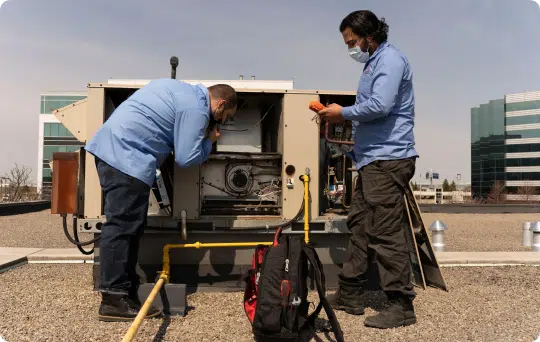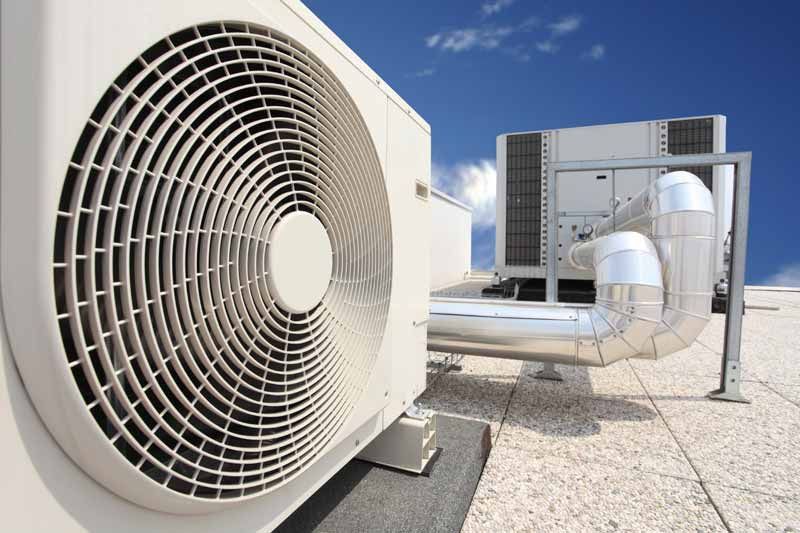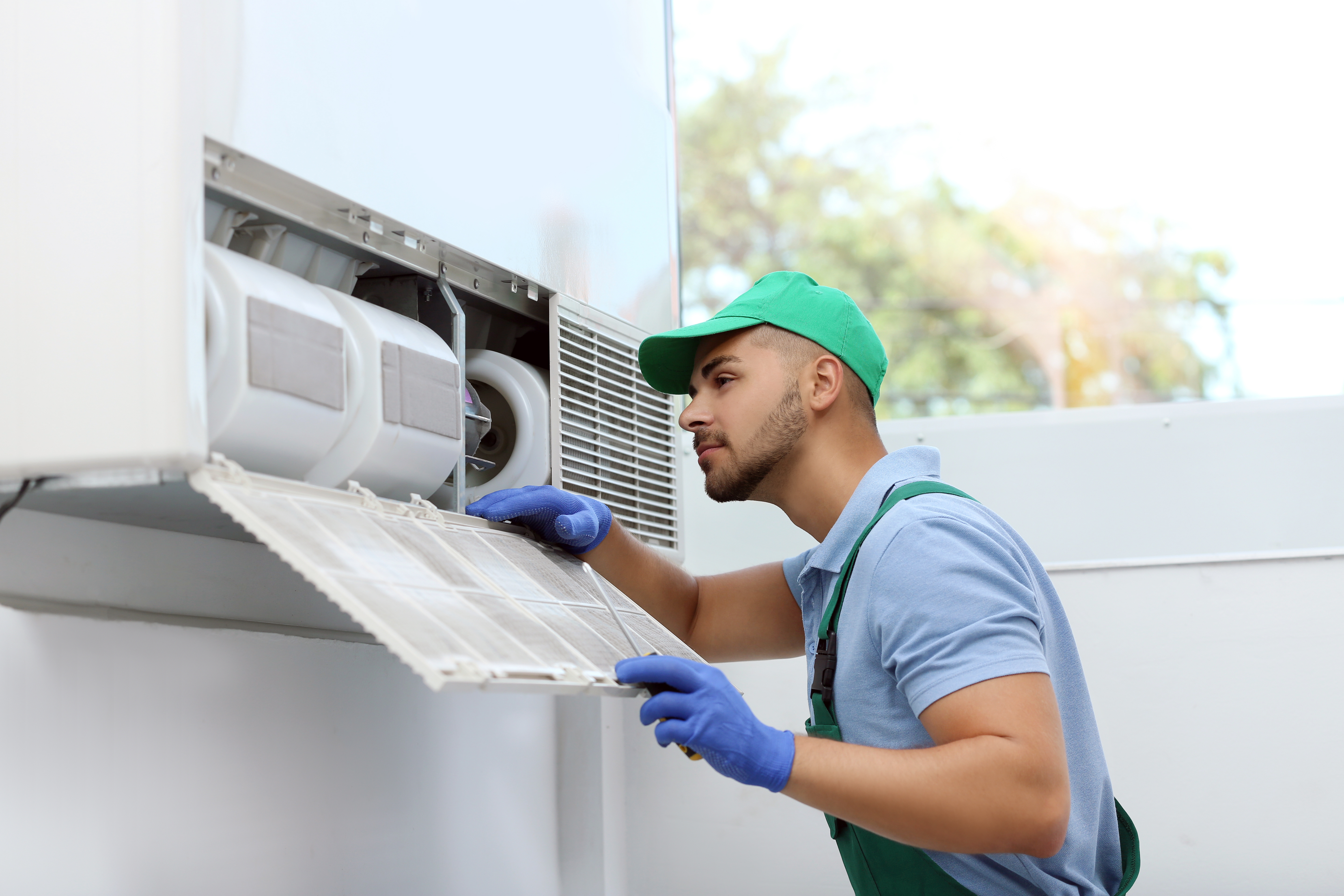Choosing the Right Time for furnace replacement
Choosing the Right Time for furnace replacement
Blog Article
How a Heatpump and Heater Interact to Maximize Your Home's Home heating Performance
Comprehending how a heatpump and furnace collaborate is crucial for house owners looking for efficient home heating options. Each system has its staminas, offering a well balanced strategy to home convenience. The warmth pump stands out in modest temperatures, while the heater supplies fast heat during extreme cold. This synergy not just minimizes power prices however additionally improves the life-span of both devices. What aspects influence this partnership, and how can home owners maximize their advantages?
Comprehending Heat Pumps: Exactly How They Function
Although lots of individuals might be unfamiliar with their inner functions, heat pumps play a crucial role in modern-day furnace. These devices operate by moving warmth from one location to one more, utilizing the concepts of thermodynamics. In cooler months, a heatpump essences heat from the outside air, ground, or water, and transfers it inside your home to heat the home. Conversely, throughout warmer months, it can reverse the procedure, functioning as an a/c by expelling heat from inside to the outside.Heat pumps include an evaporator, compressor, expansion, and condenser valve. The refrigerant within the system soaks up warmth as it evaporates at low temperatures and pressures. The compressor then enhances the pressure and temperature of the refrigerant, enabling it to release warm as it condenses. This efficient process can considerably minimize energy usage contrasted to typical home heating techniques, making heatpump a lasting selection for climate control in homes.
The Function of Heaters in Home Home Heating
Heating systems play a necessary function in home heating by supplying a trusted resource of heat throughout the chillier months. They operate by creating warmth through burning or electrical resistance, dispersing it throughout the home using ducts or glowing systems. The effectiveness of a furnace is commonly gauged by its Annual Fuel Application Efficiency (AFUE) score, which indicates how properly the system converts gas right into heat.Furnaces can make use of numerous power sources, consisting of gas, electrical power, oil, or gas, enabling house owners to select one of the most appropriate alternative for their needs. Unlike heatpump, which might struggle in severe chilly, heaters keep constant performance, making sure that indoor temperatures remain comfy regardless of outside problems. Furthermore, modern heaters typically come equipped with innovative modern technology, such as wise thermostats and variable-speed blowers, boosting their efficiency and responsiveness. This versatility makes heating systems a crucial component in comprehensive home heating strategies.

Advantages of Utilizing Both Systems With Each Other
Integrating the toughness of both heating systems and heatpump can cause a much more efficient and effective home heating option. Using both systems allows property owners to make use of the warmth pump's energy performance throughout milder temperature levels while relying upon the furnace for even more severe cold problems. This double method can substantially minimize power costs, as warmth pumps take in much less power than traditional home heating methods when temperature levels are moderate.Additionally, making use of both systems together can enhance convenience degrees in the home. Heatpump can provide regular, also heating, while heaters can swiftly raise ambient temperature levels when needed. The combination of both systems can extend the life expectancy of devices by reducing wear and tear on each system, as they share the work. Ultimately, house owners can take pleasure in a balanced, cost-effective home heating option that readjusts perfectly to varying weather condition conditions, making sure a cozy and welcoming home throughout the cold weather.
Just How Heat Pumps and Furnaces Complement Each Other
When homeowners integrate warm pumps and heating systems, they produce a corresponding heater that takes full advantage of performance and convenience. Heatpump run by moving heat from the outdoors air or ground, making them highly efficient in modest environments. They excel throughout milder temperature levels, supplying economical home heating. Alternatively, heaters produce warmth with combustion or electric resistance, providing strong, immediate warmth throughout severe chilly conditions.The combination of these two systems allows for dynamic changes based on temperature level variations. During warmer months or milder winter days, the heatpump can take the lead, preserving power and decreasing costs. As temperature levels decline, the heater can effortlessly engage, ensuring consistent warmth throughout the home. This harmony not only optimizes energy use but also boosts the life-span of both systems, as each system operates within its suitable performance array. Together, they develop a well balanced environment that adjusts to varying environment demands.
Optimizing Performance: Tips for Homeowners
Property owners can improve their home heating efficiency with several practical methods. Establishing a normal upkeep routine, incorporating wise thermostat modern technology, and applying efficient insulation and securing services are vital steps. These measures not just boost comfort yet additionally lower energy prices.
Normal Maintenance Set Up
To guarantee optimal home heating performance, establishing a normal maintenance routine is important for any kind of home. Property owners need to prioritize routine inspections of both heatpump and heaters to ascertain peak efficiency. This includes transforming air filters each to three months, as clogged up filters can significantly reduce effectiveness. In addition, organizing expert upkeep at the very least yearly enables technicians to determine and attend to possible concerns prior to they intensify. House owners should additionally clean the heatpump's exterior system to stop debris accumulation that can prevent airflow. By sticking to a normal upkeep timetable, property owners not just boost their heater' performance but likewise prolong their life expectancy, causing greater convenience and minimized power expenses throughout the cooler months.
Smart Thermostat Combination
Integrating a wise thermostat right into a home heater can considerably enhance power efficiency, especially as it enables specific control over temperature settings. These devices can find out the property owner's schedule and choices, automatically changing the temperature level to enhance convenience while lessening power usage. For circumstances, they can reduce home heating during times when the home is unoccupied, lowering unnecessary consumption. Numerous smart thermostats also supply real-time energy use data, making it possible for homeowners to make educated decisions concerning their home heating behaviors. Furthermore, remote accessibility via smart device apps permits users to change setups from anywhere, making certain the home is warm upon return. Generally, smart thermostat assimilation not only enhances convenience but considerably adds to energy cost savings and efficiency.
Insulation and Sealing Solutions
Smart thermostats play an important role in energy effectiveness, yet their performance can be considerably boosted by proper insulation and sealing solutions. Property owners need to prioritize insulating attics, walls, and floorings to lessen warmth loss. High-quality insulation materials, such as spray foam or fiberglass, can substantially improve thermal useful reference resistance. Additionally, sealing gaps around doors, ducts, and windows prevents cold air infiltration and heat retreat. Weatherstripping and caulking are efficient approaches for dealing with these leakages - furnace replacement. Routine inspections for air leaks, together with the use of blower door tests, can help determine issue locations. By spending in insulation and securing, property owners can maximize the efficiency of their home heating systems, inevitably bring about decreased energy intake and lower utility bills
Common Misconceptions Regarding Heat Pumps and Furnaces
What mistaken beliefs surround warmth pumps and heaters? Lots of individuals mistakenly think that heatpump are ineffective in colder environments. In truth, contemporary heatpump are designed to operate successfully even in reduced temperature levels, supplying trustworthy heating throughout winter. One more common misconception is that furnaces are constantly a lot more effective than heatpump. This depends on the specific power resources and effectiveness rankings of the units in inquiry. Some may additionally think that making use of both systems concurrently is unnecessary, however as a matter of fact, this mix can enhance home heating effectiveness, specifically during severe weather. Additionally, people usually presume that heat pumps need consistent upkeep, when in reality, they have similar maintenance requires to standard heating unit. By unmasking these misconceptions, property owners can make even more educated decisions regarding their home heating alternatives, eventually leading to enhanced convenience and energy effectiveness in their homes.
Upkeep Considerations for Combined Systems

Regularly Asked Concerns
Can Warmth Pumps Job Efficiently in Exceptionally Cold Climates?
Heatpump can find more info have a hard time in very cool climates due to lowered efficiency and heat extraction constraints. Nonetheless, developments in innovation have actually brought about designs designed for much better performance in such conditions, improving their practicality in rough environments.
Just How Lengthy Do Warmth Pumps and Furnaces Commonly Last?
Heatpump commonly last 15 to 20 years, while furnaces have a lifespan of 15 to 30 years. Routine upkeep can expand their longevity, guaranteeing efficient operation and reducing the need for premature substitutes.

What Is the Ordinary Expense of Installing Both Equipments?
The average price of installing both a warm pump and a heater typically varies in between $5,000 to $10,000 - heat pump service. Factors affecting this price include system size, setup complexity, and local labor rates
Are There Tax Obligation Incentives for Making Use Of Energy-Efficient Heating Solutions?
Several homeowners ask about tax obligation motivations for energy-efficient heating unit. Different government and state programs typically provide rebates or credits, encouraging the adoption of lasting modern technologies to decrease power intake and advertise ecological duty.
How Do I Select the Right Dimension Warmth Pump and Heater?
Picking the right size heatpump and heating system includes determining the home's square footage, thinking about insulation quality, and assessing local climate. Consulting a professional can ensure suitable system efficiency and energy efficiency based on specific demands. ductless mini splits. Understanding just how a warm pump and heater job together is essential for home owners seeking reliable heating remedies. In chillier months, a warm pump extracts warmth from the outdoors air, ground, or water, and transfers it indoors to heat the living area. When homeowners integrate heat pumps and furnaces, they produce a complementary heating system that makes the most of efficiency and convenience. Heat pumps operate by moving warm from the outside air or ground, making them very effective in modest environments. Heat pumps can battle in very cold climates due to reduced performance and warm extraction constraints
Report this page